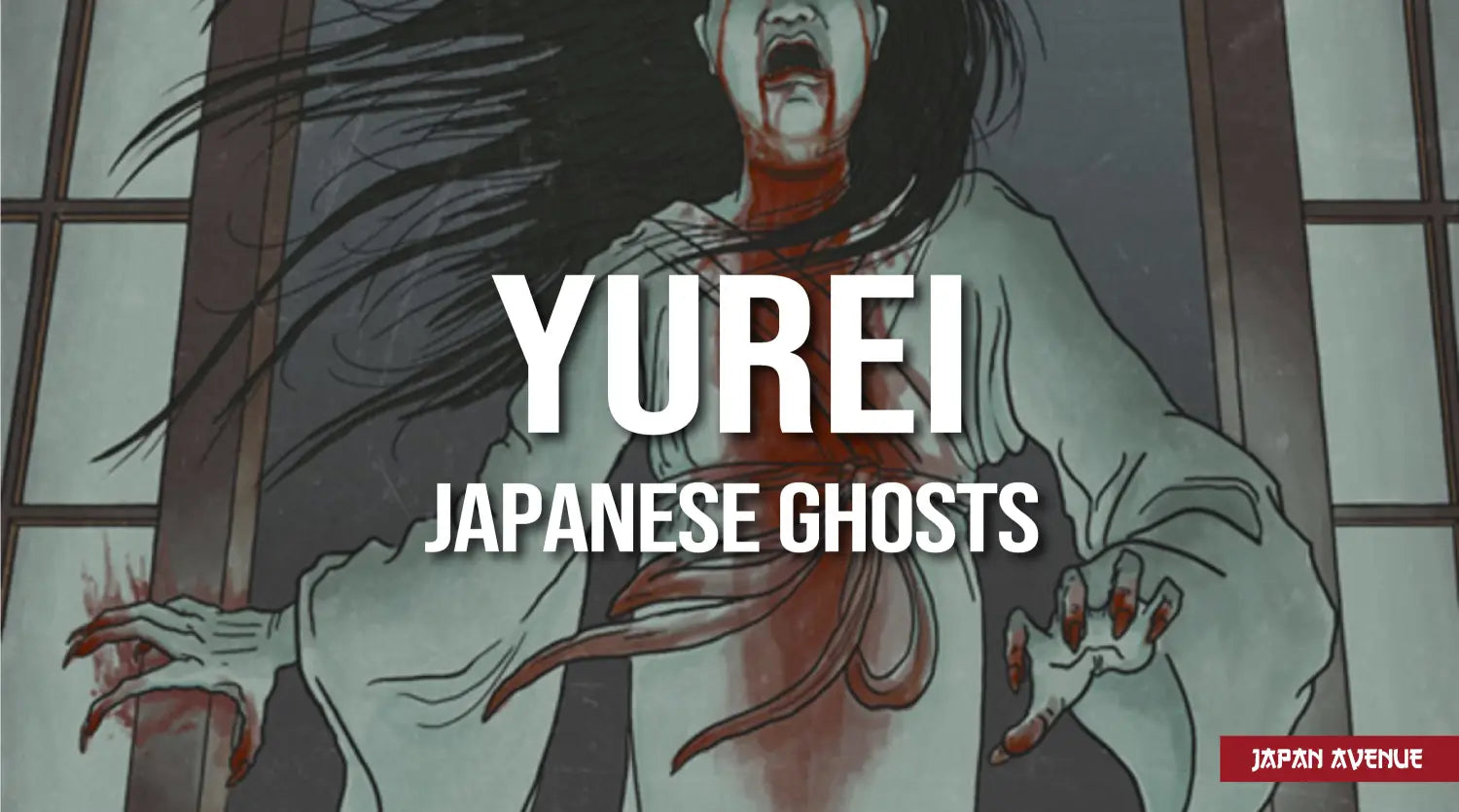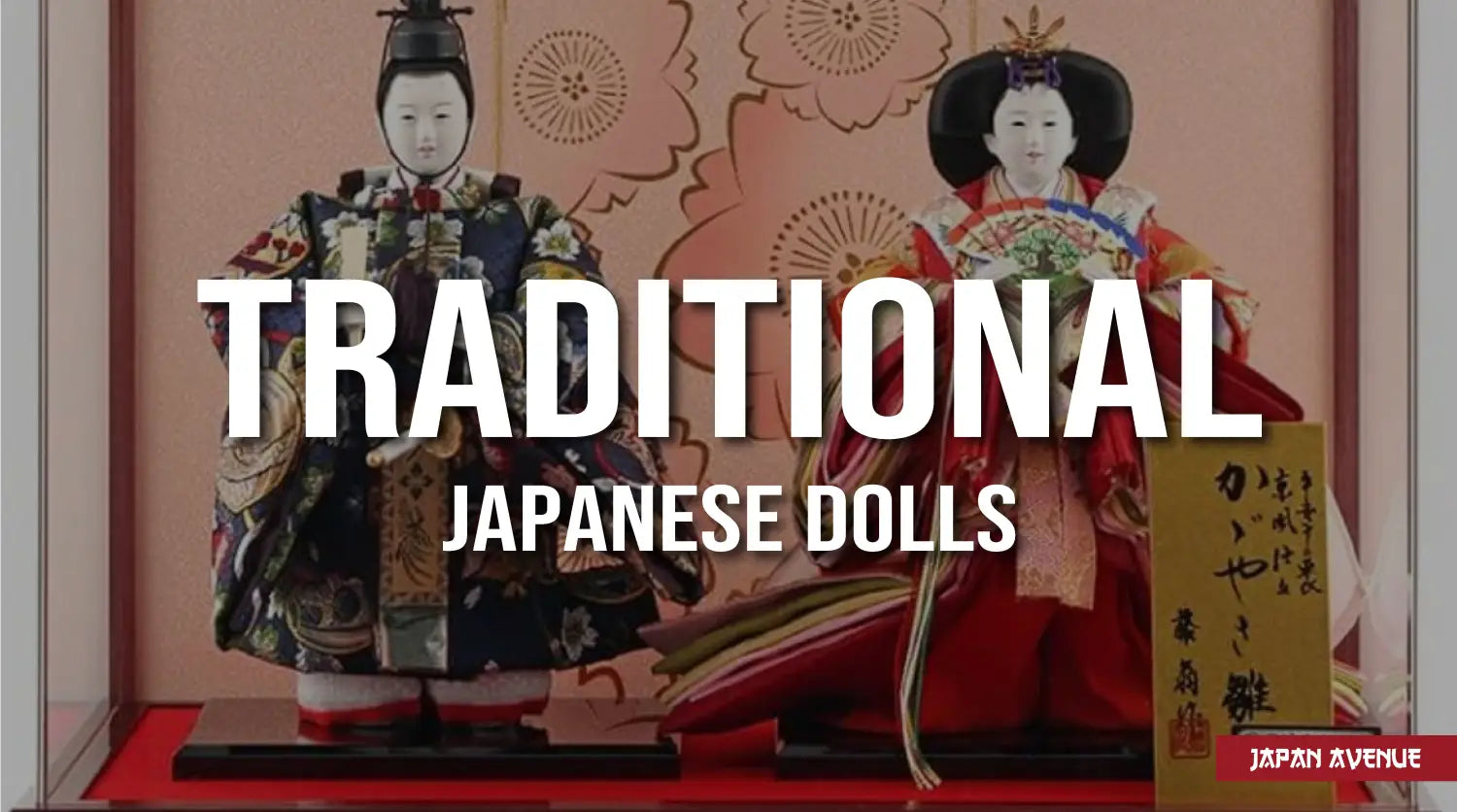Today, we will introduce you to the yurei, or famous ghosts of Japanese folklore 👻. Better sit tight, because our article might give you some goosebumps 😱. After all, every culture has its own terrifying legends.
In Japan, there are lots of stories around the yurei that scare both young and old. These creatures from the afterlife are vengeful Japanese specters coming to haunt the living. Yuu stands for "dark" and rei for "soul or spirit".
In Japanese legends and myths, yurei are often the deceased who suffered a violent death, a tragic fate or those who have not digested their torments on Earth. Unable to find peace, they find themselves imprisoned in limbo forever. These supernatural beings are part of the yokai family, the demons abounding in Japanese folklore. Ever since the Edo period, they have been very popular in Japanese literature and art.
What is a yurei, how to recognize one and how to get rid of it? Follow this guide to avoid suffocating from fear!

Representation of a yurei, unknown artist / Representation of a yurei by Matthew Meyer.
👻 Yurei, the vengeful ghost of Japan
According to Japanese beliefs, each individual has a soul. When a person dies ☠ the spirit detaches from the body and joins the ancestors and becomes a guardian of the family.
When death is violent, as in the case of murder or a dramatic accident, or if the religious rites could not be carried out normally, the deceased may sometimes turn into a yurei.
Similarly, if the deceased is overwhelmed by negative emotions such as anger or sadness, it may find itself unable to find eternal rest and come back to haunt the living in order to take its revenge.
Thus, the yurei can haunt a person, an object or even a place like the Aokigahara forest which is very popular in Japan due to the number of its suicides, until it is released from its torment.
👀 How to recognize a yurei?
This creature is easily recognizable because it does not have legs. As it is no longer part of this world, the yurei cannot walk on the ground like humans would. It wanders in limbo, which gives it that characteristic floating appearance.

On the left: representation of an Onryo. On the right: representation of an Ubume.
Often represented as a young woman, with long black hair, disheveled and with hanging arms. Her skin is pale and livid... normal since she is dead. She carries a hitaikakushi on her forehead or talisman that is supposed to ward off evil spirits and a wispy white robe similar to a funeral kimono 🥋. The creature is often accompanied by will-o'-the-wisps, to signify the appearance of a paranormal phenomenon.
In Japan, both yurei and yokai are particularly active in summer during the Obon period and usually appear at night. It is not for nothing that the day of the ghosts is celebrated on July 26th in the archipelago.

On the left: representation of a Goryo. On the right: representation of Funayurei.
Types of yurei
There exist several types of yurei more or less dangerous:
- Onryo : vengeful ghost that can be found in most Japanese horror movies such as The Ring.
- Ubume : ghost of a young mother or woman who died while she was expecting a child.
- Goryo : ghost of a nobleman, responsible for natural disasters
- Funayurei : spirit of a drowning person who tries to capsize boats.
✋ How to get rid of a yurei?
If, by misfortune, you are haunted by a yurei, you can use a talisman to ward off evil spirits, but the only way to eradicate it is by bringing it eternal rest. First of all, you need to understand what the ghost is asking for and what the purpose of his revenge is.
In case of a failed funeral ceremony, you can soothe his or her soul by performing funeral rites or finding an honorable grave.
Sometimes the yurei simply wants justice. This is frequently the case when he has been persecuted or deeply bruised.
Exorcism performed by a Buddhist monk is sometimes necessary when the vengeful spirit still does not disappear after all.

Different representations of yurei. (source: Galerie Mingei)
📖 Japan's most frightening yurei stories
🗡 Yotsuya Kaidan
Probably the most famous ghost story in Japan. This kabuki play written in 1825 by Tsuruya Namboku IV has inspired many horror movies. It' s about the terrible legend of Oiwa, a young Japanese woman betrayed by her husband.
A poor samurai named Lemon manages to marry the sweet Oiwa after murdering her father. Later, he is seduced by another, richer woman named Oume. In love, she decides to get rid of her rival by disfiguring Oiwa with a poison. Lemon then wishes to separate from his wife in order to marry Oume, so he finds a way to dishonor her and achieve his goals. When Oiwa sees her reflection in a mirror, she realizes that she has been tricked and she explodes with rage before accidentally killing herself. After her death, she returns to haunt her husband to fulfill her revenge until Lemon kills his new wife and gets murdered in turn by Oiwa's brother.
🍽 Bancho Sarayashiki
The story of Bancho Sarayashiki is about a servant girl who was tortured by a samurai when she accidentally broke a porcelain plate from a 10-piece set. One day, she managed to escape from her torturer and drowned in a water well. Ever since, she returned to torment her wrongdoer every night, by counting to 9 while crying.
💀 Botan Dōrō
The destiny of two lovers is shattered by the tragic death of the young woman of outstanding beauty. Overwhelmed by grief, the young man wanders around at night, in total despair. It is then that he perceives the ghost of his beloved illuminated by a lantern. Happy to find each other, the young lovers spent several nights together. But one day, the neighbor realizes that the beautiful woman is actually a skeleton. Disgusted, he decides to end their relationship. The young man then spends one last night with his lover before being found dead in the morning.
🎥 The yurei in Japanese culture
The fascination with ghost storytelling began in the 17th century with hyakumonogatari kaidankai, a popular game of telling ghost stories by candlelight. The incredible popularity of this game led to the publication of numerous collections of mystery stories.
From the 18th century, No and Kabuki theater started to stage ghost stories. This was the beginning of yurei-zu, an artistic trend which consists in representing paintings and prints of ghosts or strange creatures.

Image from the horror movie The Ring.
In later years, the enthusiasm for yurei is still present, especially during the O-bon festival which celebrates the ancestors. During this ceremony, kaidan or Japanese ghost tales dating back to the Edo era are recounted. These ancient superstitions are revived in Japanese manga, video games and movies, to the delight of many teenagers.
If Japanese ghosts are fascinating you, you should also know that there exist legends about cat ghosts. They are called Bakeneko and are far from the adorable cat that purrs when you pet it. They are even said to haunt their homes by taking possession of the inhabitants. Brrrr 😨
From the Edo era until today, yurei have fascinated and frightened many Japanese, whether in front of screens, in books or in the theater... the yurei ghosts haunt the minds.



